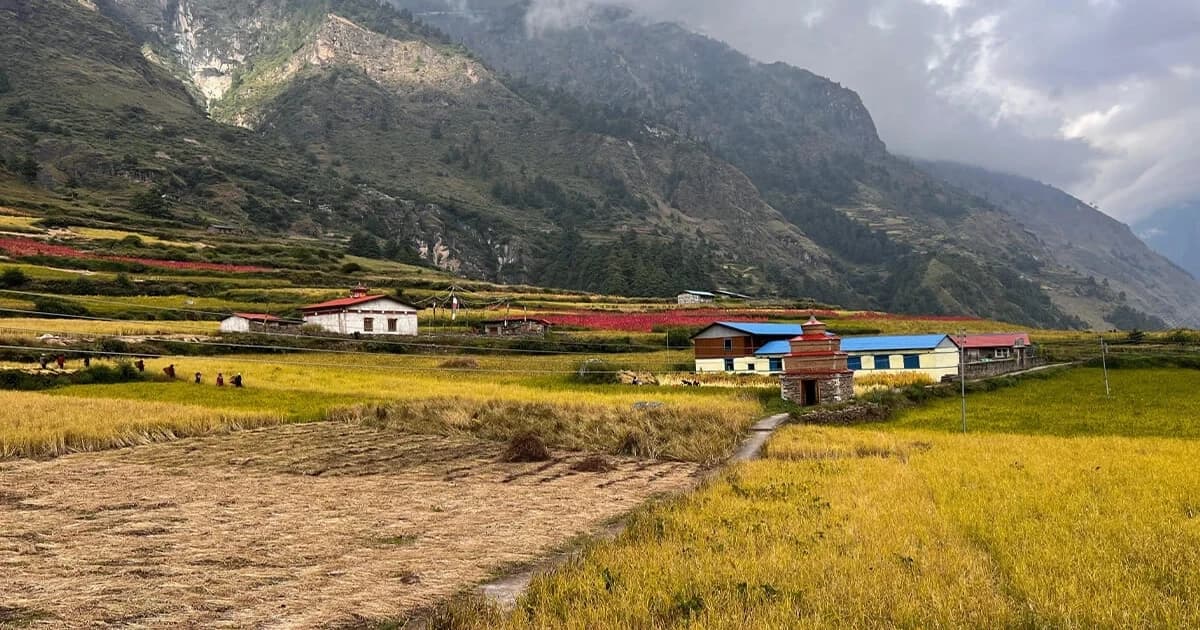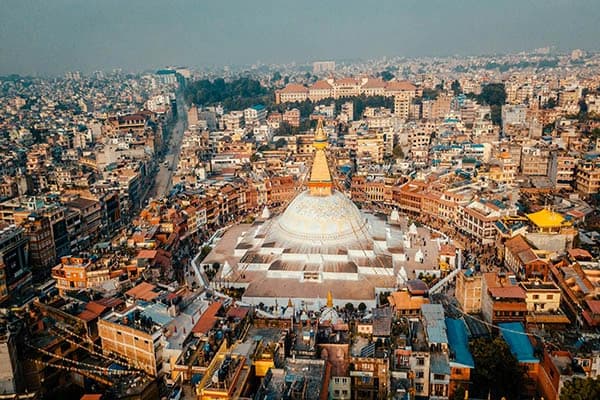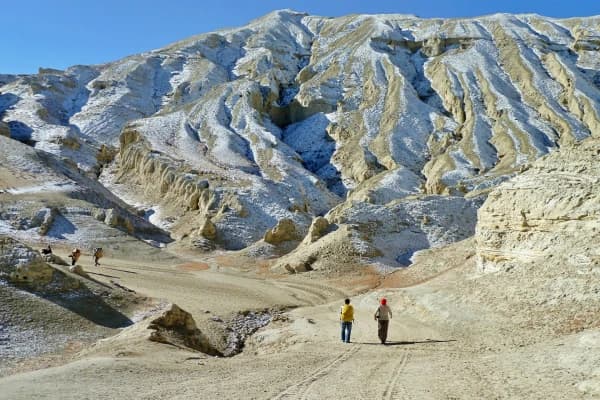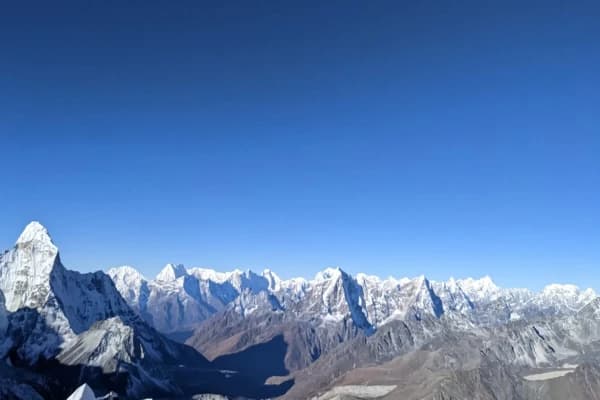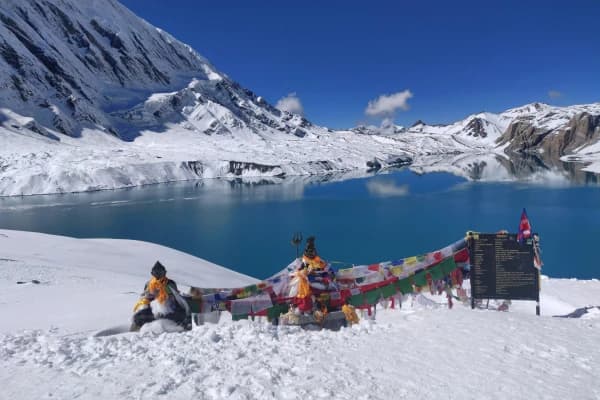Tsum Valley trekking takes you deep into Nepal’s remote Manaslu region, offering a rare blend of untouched Himalayan landscapes, ancient Tibetan Buddhist culture, sacred monasteries, and traditional villages. Perfect for adventurers seeking an off-the-beaten-path experience, this trek reveals the spiritual beauty and cultural richness of the Himalayas.
Tsum Valley Trekking: The Ultimate Guide to Nepal’s Hidden Himalayan Gem
Section 1: Introduction to Tsum Valley Trekking
Tsum Valley trekking is a peaceful and beautiful hike in the mountains of Nepal. This valley is hidden far away in the northern part of the Gorkha district, near the border with Tibet. There aren't many tourists who know about it, but it's a valley that is full of peaceful villages, old monasteries, and beautiful views of the mountains.
This valley used to be off-limits to visitors and was only opened in 2008 due to which the culture and nature here are still very pure. People who live in Tsum Valley are called Tsumbas. They follow Tibetan Buddhism and speak their own language. Along the way, you can see prayer flags, mani walls (stone walls), and friendly monks.
The trek begins close to the Manaslu trekking route. Some people combine the two trails and call it the Manaslu and Tsum Valley Trek or the Tsum Valley and Manaslu Trek. These paths go through deep rivers, green hills, and snowy peaks like Ganesh Himal, Sringi Himal, and Baudha Himal.
Tsum Valley trekking is great if you want to go somewhere special with fewer people and experience cultures.
Section 2: Tsum Valley Trekking Map & Route Overview
Tsum Valley trekking takes you through beautiful mountain scenery and quiet villages along a peaceful path.
Below is a simple breakdown of the route and map overview to help you understand how the trip goes.
Route Overview
-
Starting Point:
-
Most people who go on the trek start from Soti Khola or Jagat in the Manaslu area.
-
You walk along the Budhi Gandaki River and see farms, forests, and suspension bridges.
-
-
Entry into Tsum Valley:
-
The trail splits at the village of Lokpa.
-
You leave the Manaslu Circuit and go into the Tsum Valley here.
-
-
Main Villages Along the Trail:
-
Chumling is the first village in the lower valley.
-
Chhokang Paro is an open space with wide views.
-
Nile: The last village before the highest point
-
Mu Gompa is a holy monastery at the top of the valley.
-
-
Ending Point:
-
Usually, the trek ends back at Jagat or Soti Khola after coming back from Mu Gompa.
-
You can also combine this trek with our Manaslu Circuit Trek package too if you want to explore more.
-
Map Highlights
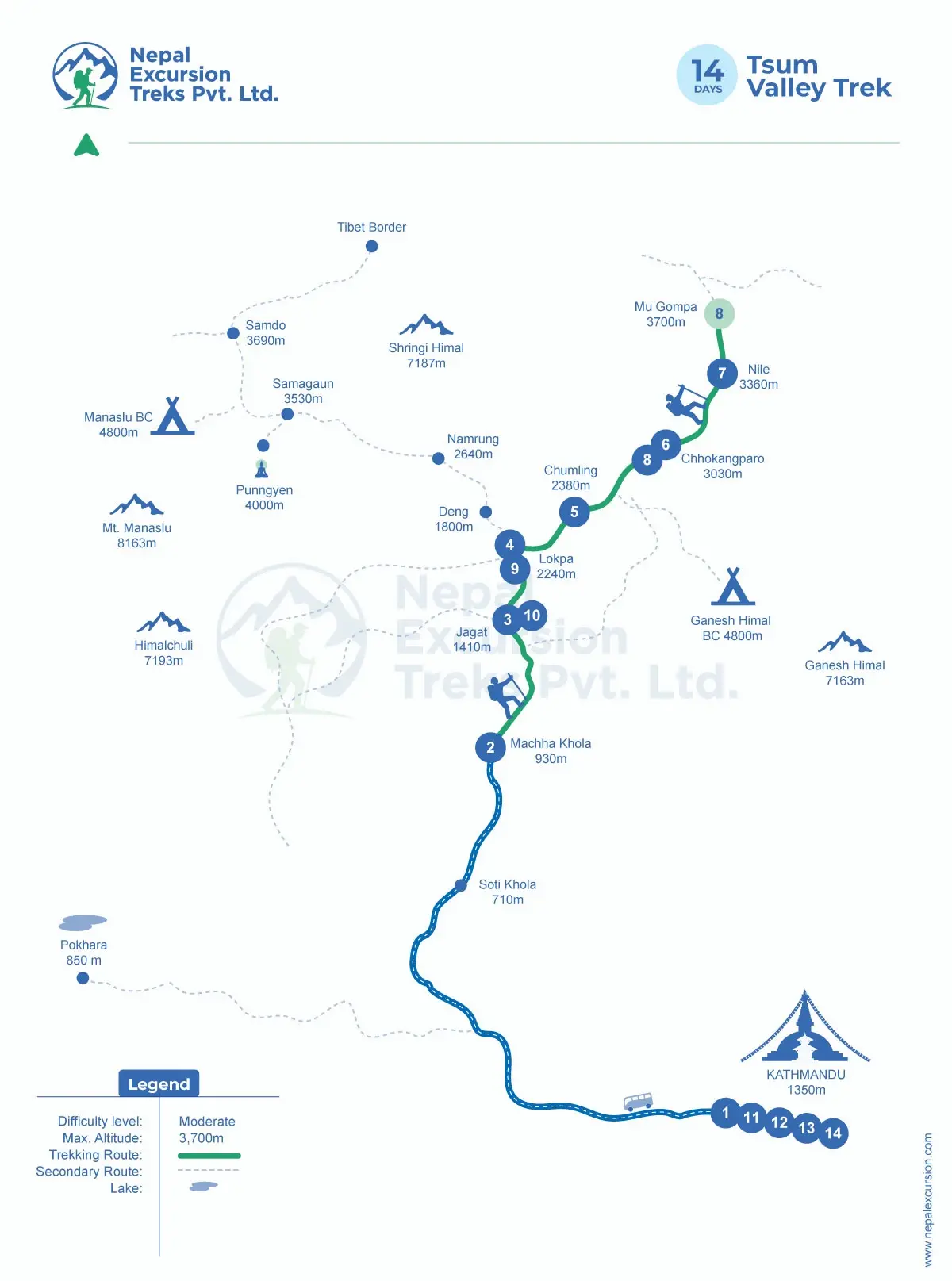
-
The Tsum Valley Trek Map shows a path that is less crowded and more cultural.
-
Mountains you’ll see include:
-
Ganesh Himal
-
Sringi Himal
-
Baudha Himal
-
-
The Manaslu Tsum Valley Trek Map includes both:
-
The Tsum Valley trail
-
The Manaslu Circuit (which goes over Larke Pass)
-
-
These maps help you:
-
Track your altitude
-
Know where villages and monasteries are
-
Plan rest stops and side hikes
-
-
Travel companies like our Nepal Excursion and other companies provide expert guides who can help you stay on the right path by following these maps thus providing you with a safe, reliable and comfortable journey.
Section 3: Key Villages & Cultural Highlights
One of the best things about the Tsum Valley Trek is seeing local culture that hasn't changed in hundreds of years and visiting quiet villages. There are a lot of monasteries, chortens, mani walls, and colorful prayer flags in this area because the people here practice Tibetan Buddhism.
Along the trail, you will visit some of the most important villages and cultural sites.
Key Villages in Tsum Valley
-
Lokpa
-
This is the way to Tsum Valley.
-
You leave the busy Manaslu Circuit and go to a quieter, less well-known trail.
-
-
Chumling
-
This is the first real Tsum village on the trek.
-
You can see the Ganesh Himal from here and visit the Panago Gompa (monastery).
-
-
Chhokang Paro
-
A big, flat area made up of the two villages of Chhokang and Paro.
-
This is one of the valley's oldest towns.
-
Full of Buddhist culture and a farming way of life.
-
-
Nile
-
The last village before the big monastery.
-
You'll see simple houses, fields of barley, and people who are nice.
-
-
Mu Gompa
-
This is the highest point of the Tsum Valley trek and a well-known monastery.
-
At 3,700 meters, it has amazing views of snowy mountains.
-
You can meet monks, learn how to meditate, and even spend the night.
-
-
Rachen Gompa
-
In the middle of the valley is a beautiful nunnery, which is a home for female monks.
-
Very quiet and a good place to learn about Buddhist customs.
-
Cultural Highlights
-
Mani Walls
-
As a sign of respect you have to walk on the left side of long stone walls with prayers carved into them.
-
-
Chortens & Prayer Flags
-
You will see many of these on the trail, which is all part of the deep spiritual life here.
-
-
Festivals and Monastic Life
-
Many Buddhist holidays are celebrated by the Tsumba people.
-
Monks and nuns live in quiet monasteries and follow old rules.
-
-
Tibetan Influence
-
Since the valley is close to Tibet, the language, clothes, and homes are similar to Tibetan culture.
-
Why It Matters for Trekkers
-
The villages along the Tsum valley trekking make the journey feel very special because you're not just hiking, you're also learning.
-
If you book our Tsum Valley Trek package from us Nepal Excursion, you'll be able to learn more about the valley's stories, history, and customs along with getting personalized amazing services, experienced guides, care.
-
This part of the trail is usually the most meaningful and quiet if you're doing the Manaslu Tsum Valley trek.
Section 4: Natural & Spiritual Highlights
Tsum Valley Trekking isn't just a walk through the mountains; it's a journey full of natural beauty and spiritual peace. The journey will feel magical because you will see huge snowy peaks, quiet forests, sacred caves, and old monasteries.
Here are the best natural and spiritual things you can see on the trail:
Natural Highlights
-
Snow-Capped Mountains
-
Along the trail, you'll see beautiful views of Ganesh Himal, Sringi Himal, and Baudha Himal.
-
The people who live here hold these tall peaks sacred..
-
-
Peaceful Forests and Rivers
-
You will walk through green pine forests, cross hanging bridges, and follow the calm Budhi Gandaki River.
-
-
Alpine Landscapes
-
The landscape changes to open fields with big skies and fresh air as you go higher up in the valley.
-
Great places to take pictures and relax.
-
-
Unique Wildlife
-
If you're lucky, you might see Himalayan blue sheep, marmots, or even snow leopards (which are very rare).
-
The Manaslu Conservation Area protects this area.
-
Spiritual Highlights
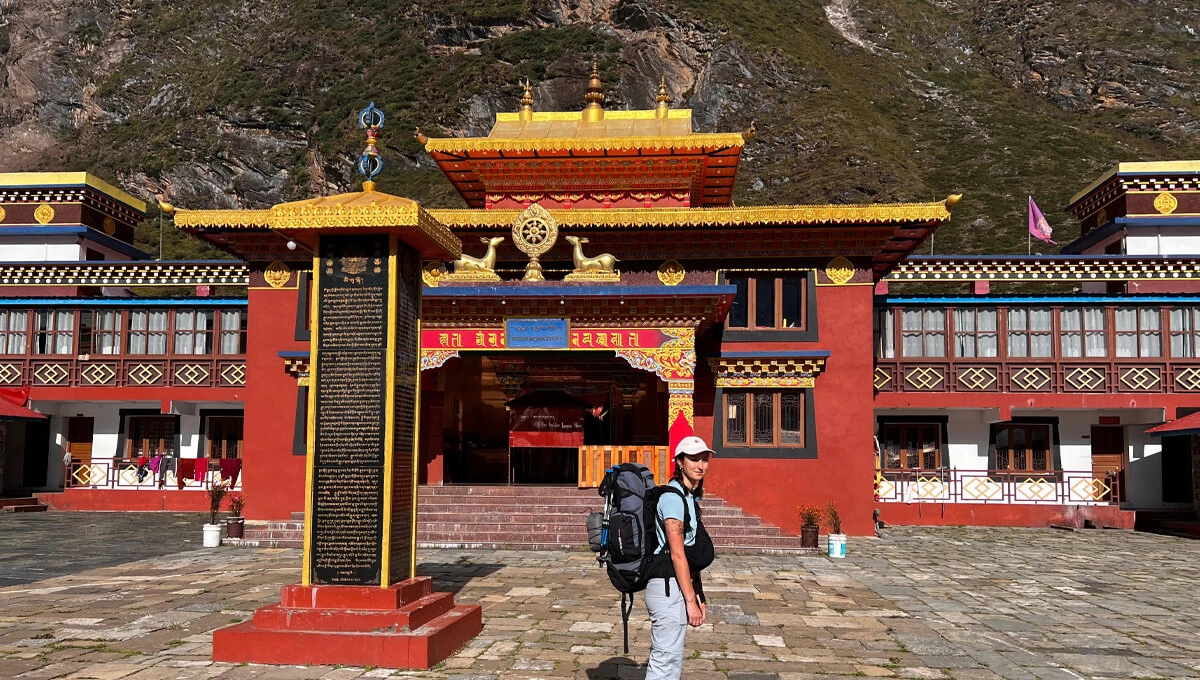
-
Mu Gompa Monastery
-
The most well-known Buddhist monastery in the valley is at the highest point of the trek, which is 3,700 meters.
-
You can see monks, meditate with them, or even stay the night here.
-
-
Rachen Gompa
-
A peaceful nunnery where female monks live and practice Buddhism.
-
It's a peaceful place to learn about Tibetan-style spirituality.
-
-
Milarepa’s Cave (Piren Phu)
-
A holy cave where the famous Buddhist saint Milarepa is said to have prayed.
-
There are prayer flags and paintings on the cave, which is carved into a cliff.
-
-
Mani Walls and Chortens
-
Long stone walls with carved Buddhist prayers on them.
-
Along the trail, there are colorful chortens (stupas) that mark holy places.
-
-
Tibetan Buddhist Traditions
-
You can hear monks chanting, see prayer wheels spinning, and feel the spiritual energy of the valley all around you.
-
Why This Trek is Spiritually Special
-
In Tibetan Buddhism, the Tsum Valley is called a "Beyul," which means "hidden, sacred valley."
-
People think of the whole area as a place to find peace, heal, and think quietly.
-
A lot of people who hike through Tsum say they feel calmer, lighter, and more connected.
Section 5: Permits, Access & Trek Logistics
Before starting Tsum Valley Trekking, you should know what permits you need, how to get to the trailhead, and the basics of planning your trip. Because the valley is in a restricted area of Nepal, every trekker must follow certain rules.
Permits Required for Tsum Valley Trek
To enter Tsum Valley, you need the following permits:
-
Tsum Valley Restricted Area Permit (RAP)
-
All trekkers must have this.
-
Costs $40 a week from September to November and $30 a week from December to August.
-
You can only get it from a registered trekking company like Nepal Excursion.
-
-
Manaslu Conservation Area Permit (MCAP)
-
Covers the area from Soti Khola to Lokpa.
-
Costs NPR 3,000 (approx. USD 25).
-
-
Annapurna Conservation Area Permit (ACAP)
-
This one is needed if you plan to continue from Tsum into the Manaslu Circuit.
-
Costs NPR 3,000 (approx. USD 25).
-
-
Minimum Group Rule
-
A minimum of two trekkers is required for the RAP.
-
You must also hire a licensed guide.
-
How to Reach Tsum Valley (Access)
-
Start Point:
-
Most hikes start in the Gorkha district's small towns of Soti Khola or Machha Khola.
-
-
Getting There:
-
You can get to Arughat or Soti Khola from Kathmandu in 8 to 10 hours by private jeep or local bus.
-
The roads are rough, especially during the rainy season.
-
-
Trek Route:
-
You hike north from Soti Khola through villages like Machha Khola, Jagat, and Lokpa before you get to Tsum Valley.
-
-
Alternative Route:
-
Some people who hike this trail also do the Manaslu Circuit, but they start and end at different places.
-
The Manaslu Tsum Valley Trek is the name of this longer version.
-
Trekking Support & Logistics
-
Guides and Porters:
-
Hiring a licensed guide is mandatory for the restricted area.
-
Porters are optional but very helpful for carrying your gear.
-
-
Trekking Agency:
-
Agencies like our Nepal Excursion take care of everything for you from safety, transportation, permits, to lodging and more.
-
If you book with a professional agency like ours, then the trip will go much more smoothly, easily and also be safer.
-
-
Trek Duration:
-
The standard Tsum Valley Trek takes 14 to 16 days.
-
If combined with the Manaslu Circuit, it takes 18 to 22 days.
-
-
Difficulty Level:
-
Not too hard, but not too easy.
-
There is no technical climbing, but you need to be fit to walk long distances at high altitudes.
-
-
Best Time to Go:
-
The best weather and mountain views are in the spring (March to May) and fall (September to November).
-
Section 6: Best Season, Food & Accommodation
Before you start Tsum Valley trekking, you need to know when is the best season to travel, what food you'll eat there, and where you'll sleep. The area is quite remote, but it still has basic services for hikers.
Best Season to Trek Tsum Valley
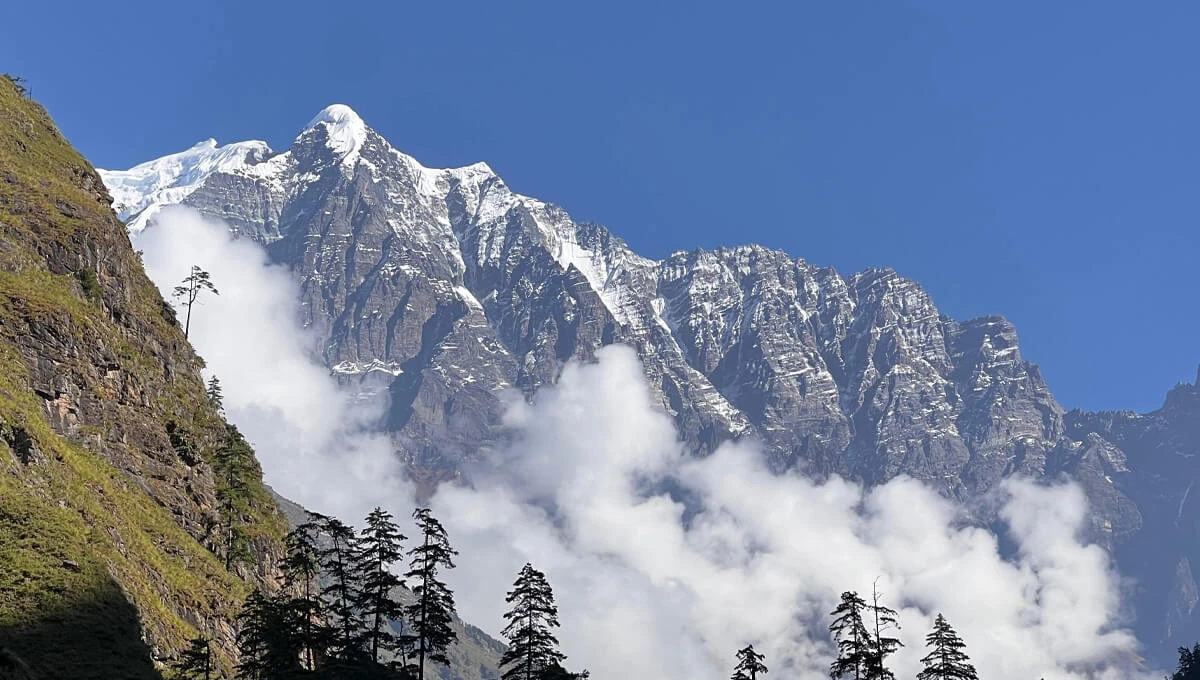
The weather in the mountains changes a lot from season to season. The best time to plan your hike is now:
-
Autumn (September to November)
-
This is the best time of year to see clear skies, dry trails, and beautiful mountain views.
-
Walking is easier when the weather is cool and stable.
-
-
Spring (March to May)
-
Another great season with warm days and rhododendron forests in bloom.
-
The trails are less dusty, and the views are still very nice.
-
-
Winter (December to February)
-
The trail is quiet, but it can get very cold and snowy at high altitudes.
-
Some tea houses may not be open, especially those close to Mu Gompa.
-
-
Monsoon (June to August)
-
This is the least recommended season because of the heavy rain, slippery trails, and leeches.
-
Landslides can make roads and trails impassable.
-
Tip: Booking your trek through a trustworthy travel operator like Nepal Excursion is best, as we will help you choose the right season and prepare for changing conditions.
Food on the Tsum Valley Trek
The food on the trek is basic but filling. It comes from nearby, is fresh, and is served in teahouses.
-
Dal Bhat (rice, lentils, vegetables) – This is the meal that is most common and has the most energy.
-
Tibetan bread, chapati, and pancakes – For breakfast or snacks.
-
Noodle soups and fried rice – Warm and easy-to-digest meals.
-
Vegetable curry, momos (dumplings), and boiled potatoes – Usually found in bigger villages.
-
Tea, coffee, and hot lemon – To stay warm and hydrated.
-
Because of religious beliefs, meat is hard to find, especially near monasteries..
Accommodation in Tsum Valley Trekking
Along the trail, you'll stay in simple teahouses. Local families run these small lodges.
-
Rooms:
-
Usually, there are two beds, blankets, and pillows for each person.
-
Some places might not have heat or private bathrooms.
-
-
Toilets:
-
In remote villages, people mostly share and squat.
-
-
Hot Showers:
-
For an extra fee, it is available in lower villages.
-
You might need to use cold water or wash with a bucket higher up.
-
-
Electricity and Charging:
-
Not much electricity, and it often comes from solar panels.
-
It costs more to charge phones or batteries.
-
-
Wi-Fi:
-
In most villages, it's very hard to find or not available at all.
-
It's best to use mobile data before you start your hike.
-
Section 7: Itinerary Example & Final Reflections
This sample itinerary below covers the Tsum Valley trek done in 14 days of our Nepal Excursion, this package offers a good mix of time to see the sights, learn about the culture, and get used to the altitude.
Sample 14-Day Tsum Valley Trek Itinerary
|
Day |
Route |
Max Altitude |
|
1 |
Drive from Kathmandu to Soti Khola |
~730 m |
|
2 |
Trek from Soti Khola to Machha Khola |
~870 m |
|
3 |
Trek Machha Khola → Jagat |
~1,340 m |
|
4 |
Trek Jagat → Lokpa (entry to Tsum) |
~2,240 m |
|
5 |
Lokpa → Chumling |
~2,386 m |
|
6 |
Chumling → Chhekang Paro (Upper Tsum) |
~3,010 m |
|
7 |
Chhekang Paro → Nile |
~3,361 m |
|
8 |
Nile → Mu Gompa and return to Nile |
~3,700 m |
|
9 |
Explore Mu Gompa, Milarepa Cave, or Rachen Nunnery |
|
|
10 |
Trek Nile → Chhekang Paro |
|
|
11 |
Chhekang Paro → Chumling |
|
|
12 |
Chumling → Lokpa |
|
|
13 |
Lokpa → Jagat |
|
|
14 |
Trek Jagat → Machha Khola, then drive to Kathmandu (~8–9 hrs) |
This itinerary includes rest days at important places (Mu Gompa, Rachen) and a slow descent, which helps with acclimatization and reflection.
Final Reflections
-
Tsum Valley Trekking is a deep mix of spiritual culture and beautiful mountains that are far away.
-
The trek's highest and most important point is Mu Gompa, which is 3,700 m high. It is at the center of the valley's Buddhist customs.
-
Side trips to Milarepa's Cave or Gumba Lungdang (a nunnery) add to your journey by giving you peace and quiet and great views.
-
A lot of people who have been to both Tsum Valley and the Manaslu Circuit say that doing them together is even better. This longer version is usually called the Manaslu Tsum Valley Trek and takes 20-22 days or more.
-
If you book a Tsum Valley Trek package with a reputable company like our Nepal Excursion, you can be sure that your permits, guides, and transportation will be handled professionally, which will keep you safe in this area that is both restricted and sensitive to other cultures.
-
This hike is for people who want to get away from the crowds and find peace, spirituality, and beautiful places that aren't well-known.
No matter if you choose the 14-day Tsum Valley trek itinerary or a longer one that includes Manaslu Circuit or both which is Manaslu Tsum Valley Trek, you'll have memories that will last a lifetime of the beautiful, untouched Himalayas and the living Buddhist culture

